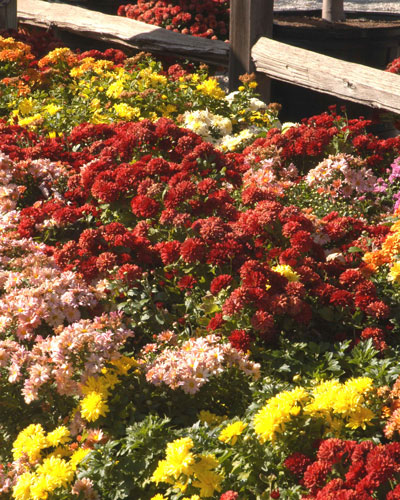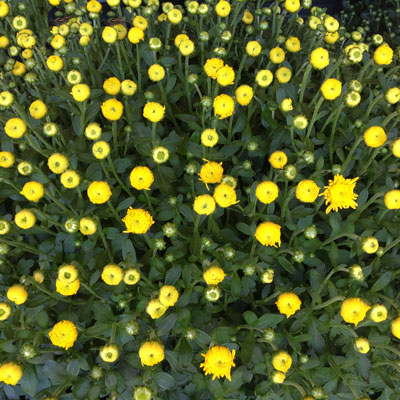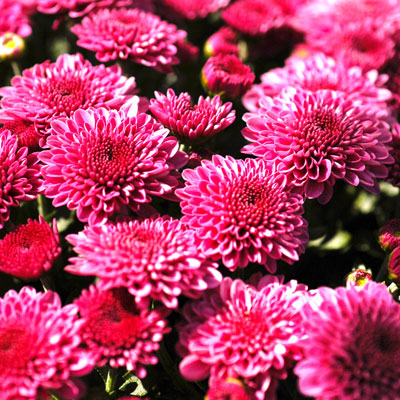Mums for Fall Color
Stop by any garden center today and you’ll run into big jewel-like displays of the most popular of all autumn flowers. Chrysanthemums, known by their best friends simply as “mums,” come in many rich shades, sizes and shapes. Fall landscapes aren’t fully clothed until the mums are brought in.

Photo: Garden mums abound in Texas nurseries this time of year.
Before we go too far, however, there are some things you need to know to be successful in growing them.
Chrysanthemums are photoperiodic. That refers to plants that measure the length of the dark period (i.e., the night) to determine when the proper time to produce flowers has arrived. They have a flower-inducing hormone in their growing tips, and that hormone is destroyed by light. When enough of the hormone accumulates, flower bud production is “initiated.”
Mums, like poinsettias and Christmas cacti are “short day” plants (meaning actually, “long nights.”) They bloom only when nights reach a certain length, which is why they only bloom in the fall unless a greenhouse grower intervenes by pulling black shade fabric over them at 5 p.m., pulling it off at 8 the next morning. That lets the plants “think” that it’s fall, even though it may be the middle of the summer. But it also means that you shouldn’t attempt to grow mums if you have strong security lighting nearby.

Photo: This garden mum was in full bud earlier this week – the perfect time to buy it.
Growing Mums in Texas
Chrysanthemums are much more common in the Midwest and Northeast, so you know they will be completely winter-hardy to all Texas cold. Grow them where they will receive full sun during the growing season, and plant them into well-draining, highly organic garden soils.

Photo: Raised bed showcases firebush in back and garden mums in full bloom.
Garden mums that you buy as they come into flower in nurseries this month will bloom for three or four weeks, then the flowers will gradually begin to fade to light brown, chaffy remains. At that point, if you look down near the soil line, you’ll see new shoots beginning to form. Those will become the plants’ main stalks next year. This year’s stems will die away over the winter. To avoid that ugliness, however, you can clip the stems back near the ground as soon as the plants have finished flowering.
The new shoots will begin active growth in early spring. If you intend to pinch taller types of mums to force side branches to form, do it when the stems are 4 to 6 inches tall. Late February is the best time to dig and divide crowded clumps of chrysanthemums.

Photo: Purple garden mums would be stunning alongside purple fountaingrass, Blackie ornamental sweet potato and almost anything else!
Garden mums usually bloom in the spring as well as the fall. Night lengths, after all, are the same then as they are in the fall. Enjoy those flowers for a few weeks, then trim them off by late May or early June, so the plants will have ample time to produce new growth, then set buds for their fall blooms.
